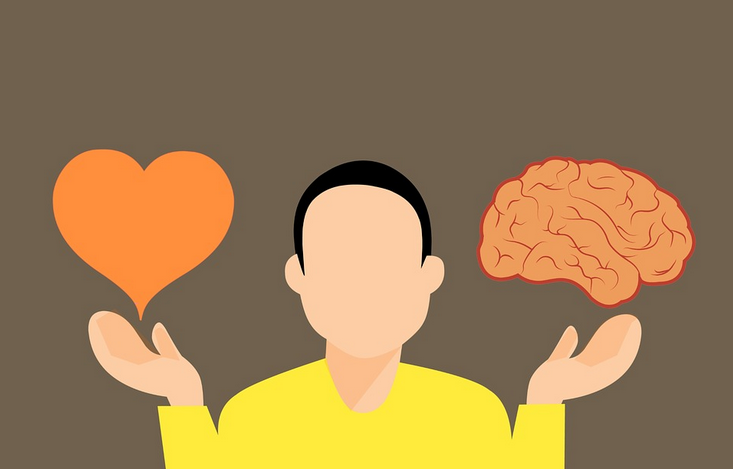These are the stages of the consumer journey. Plus, the role of small business content marketing throughout the buyer journey.

The complex consumer decision journey
Shopping might be fun but it isn’t always straightforward. Fact is, the buyer journey can be peppered with uncertainty, insecurity, and even stress due to what is known as the paradox of choice.
We end up riddled with thoughts like: Will this product really solve my problem? Have I chosen the best product / service / brand? Will I regret this purchase?
Spoiled for choice, it’s all those endless options that makes the purchase process all the more overwhelming—and decidedly more complex.
What is the consumer journey?
Also called the purchase journey, buyer’s journey, or the consumer decision journey, the consumer journey simply refers to an individual’s path to purchase.
That means, at its most basic, how a consumer moves from awareness to consideration and, eventually, the final stage of decision-making.
Buyer journey vs customer journey
While used interchangeably, the term “customer journey” actually deals with the stages that take place post-purchase, i.e. when the individual becomes a paying customer.

Stages of the buyer journey
From trigger to purchase, there are numerous marketing touch points to consider and these differ from person to person. Consumers can also go through multiple rounds of exploration and evaluation, repeating the process until fully convinced. And then there’s what’s known as the messy middle—the crucial point where customers are either won or gone.
Let’s take a closer look at these customer journey stages.
Stage 1: Awareness
The awareness stage is when a consumer becomes conscious of a problem that has to be solved or a need that isn’t being met. Situational or environmental factors can trigger this realization.
For example: John experiences tummy troubles when he consumes full cream milk.
Stage 2: Consideration
The second stage is when the consumer pinpoints the exact problem and undertakes the necessary steps to solve it.
Note that during the consideration phase, the consumer isn’t ready to commit to anything just yet. Instead, this is where more comprehensive research—exploration—takes place.
For example: John realizes he is lactose intolerant and needs to find an alternative for milk. He looks into lactose-free milk but also discovers plant-based / non-dairy milk options. John doesn’t know much about these alternatives, so he reads up on their pros and cons. What do these alternatives taste like? Can they be used for cereals, coffee, and baking? Which has the best nutritional profile?
The consideration stage is also where the evaluation of options takes place. Some choices get eliminated, others make it to the shortlist.
For example: John decides he’s going to try oat milk. He makes note of the top-rated, locally available brands.
To summarize, the research phase is an inclusive activity (you add to your list of options) whereas evaluation is a reductive process where you whittle down the options to form a final list for consideration.
Stage 3: Purchase
Once the consumer has zeroed in on his best options, it’s time to make a decision. In other words, this is the point where the consumer makes the purchase.
For example: John buys the brand of oat milk with the best feedback online.
Stage 4: Retention
This fourth, post-purchase stage is when the customer actually uses the product. This is the business’ chance to build brand loyalty—the customer should be happy with their purchase but also with the entire pre- and post-sales experience. After-sales support, delivery, product / service performance are crucial!
For example: The oat milk tastes great with cereals and in John’s coffee! He’s also happy with the price, which is why he continues to purchase the same brand of oat milk every week.
Stage 5: Advocacy
The final stage is all about, hopefully, achieving brand love. This is where the customer actively endorses the product, spreading the (good) word about your product, brand, and company both online and offline.
For example: John recommends his preferred oat milk to friends and family.

Buyer stages and the role of content marketing
For your brand to even be considered, you have to be present at the right time and with the right buyer journey content. For the competitive edge, you need to be a source of relevant and useful information. And to grow sales, you must make a (positive) impact at every stage of the consumer’s journey.
Here are a few important takeaways.
1. Content marketing can influence a consumer’s decision-making process
Shoppers want to make confident choices. That’s why consumers turn to search: They’re looking for answers to their questions and solutions to their problems.
- Desperate to find the best pet food for your sensitive furry friend? Head online to look for the top-rated hypoallergenic dog food brands—and where to buy them.
- Need a practical stroller for baby’s first long-distance international trip? Before you commit, read up on what other moms are saying about the latest baby travel systems on the market.
- Can’t decide whether to gift dad with Panama Geisha or El Injerto coffee? There’s bound to be reviews online that will make it easier to pick the bean that best suits his discerning palate.
In other words, to increase the likelihood of becoming a preferred brand, you must be discoverable when it counts. That is, your content must appear in search results as early as the awareness stage.

2. Emotions affect decisions
Part of a consumer’s decision-making process involves satisfying emotions.
In other words, decisions aren’t always rational – they’re often driven by feelings. And when it comes to the paradox of choice, consumers want to get rid of negative emotions like confusion and uncertainty. One way to do that is with thorough research.
Think about it: When you’re uncertain, you seek clarity. When in doubt, you want to be convinced.
That means that, aside from being discoverable, brands that are a source of relevant as well as trustworthy information win hearts, minds and, very often, wallets!
3. Shoppers search for trusted sources
Consumers are discerning about where and who they source their information from.
Put simply, not all information is viewed equally. Brands must first gain consumer trust for their content to be deemed credible.
Take a look at this 8-step guide on how to build an effective blog content strategy that addresses search intent—and that’s designed for every stage of the consumer journey.
4. Address cognitive biases to simplify the purchase journey
To grow sales, you need to be aware of (and prepared for) the many cognitive biases like social proof as well as authority and scarcity bias that play a role in the customer decision journey. The brand that simplifies the purchase journey – eliminating all the barriers that stand in the way of making a decision – is more likely to win the sale.